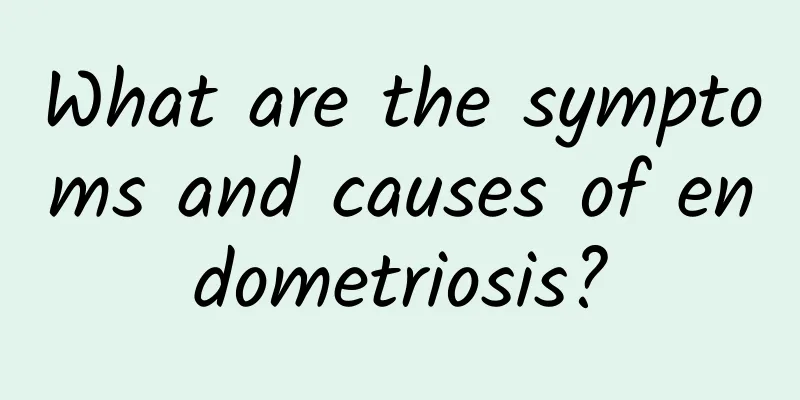How long should I take medicine for endometrial tuberculosis?

|
Endometrial tuberculosis is actually a relatively common gynecological disease. Its pathogenesis is very simple. For some reason, the endometrial tissue that should have been in the uterus runs to other areas, attaches to them and continues to grow. This greatly affects the patient's physical health. If it continues for a long time, it will also cause infertility. Drug treatment for endometrial tuberculosis Drug therapy can be divided into preoperative medication or postoperative medication. Preoperative medication can reduce the lesion, shrink the uterus, reduce pelvic adhesions and congestion, and inhibit the formation of physiological ovarian cysts, which should be beneficial for laparoscopic surgery. Drug treatment for endometrial tuberculosis At present, drug treatment for internal tuberculosis is mostly preoperative and postoperative medication. Postoperative medication can reduce residual lesions and delay the recurrence of internal tuberculosis. It is mainly suitable for patients with extensive tuberculosis lesions that cannot be completely removed or those with pain symptoms who have no fertility requirements but have cleared tuberculosis lesions visible to the naked eye. Evidence-based medical data published abroad show that it is appropriate for patients with pain symptoms to continue drug treatment for 6 months after laparoscopic conservative surgery. For patients who have cleared tuberculosis lesions visible to the naked eye and hope to have children in the near future, patients can be encouraged to get pregnant as soon as possible. Commonly used and effective drugs for the treatment of internal tuberculosis include danazol, gestrinone (gestrinone [translation]: gestrinone is a medium-strength progestin with strong anti-progestin and anti-estrogen activity, and also has very weak estrogenic and androgenic effects. It is clinically used as a contraceptive for visiting relatives or post-natal contraceptives. For early pregnancy, if used in combination with prostaglandins, it can increase the success rate of induced labor. Chinese aliases: gestrinone, 18-methyltrienylnorgestrel, qiangnoketone, dehydronorgestrel.), gonadotropin-releasing hormone analogs or agonists, progestogen drugs and oral contraceptives. Evidence-based medical data show that the efficacy of the above drugs in the treatment of internal tuberculosis is not much different, but the side effects are different and the prices are also very different. Therefore, when choosing medications, you should fully communicate with the patient and jointly develop a treatment plan. The above content is an introduction to the drug treatment methods for endometrial tuberculosis. I hope it can be helpful and of reference value to patients and friends. Experts say that endometrial tuberculosis is very harmful to patients, and there are many causes of the disease. After patients find the symptoms of the disease, they should go to the hospital for examination and treatment in time. |
<<: How effective is drug treatment for endometrial tuberculosis?
>>: What medicine is usually used for endometrial tuberculosis
Recommend
I-Me: Providing Clenbuterol Testing Data to the President
A few days ago, a Kuomintang legislator cited dat...
What are the reactions to ovarian cysts?
What are the reactions of ovarian cysts? Ovarian ...
Get rid of muscle-type obesity with dark green vegetables and vinaigrette
There are many types of obesity. Most people'...
How to effectively prevent cervical warts
Cervical warts are caused by human papillomavirus...
What are the dangers of endometriosis?
In daily life, many women do not know the role of...
What are the treatments for adenomyosis?
Uterine adenomyosis is a common gynecological dis...
Beware of the dangers of miscarriage
With the increasingly open social atmosphere and ...
Revealed: Common causes of vaginitis
The causes of vaginitis are a matter of great con...
How much does uterine fibroid surgery cost?
The cost of uterine fibroid surgery is often a co...
Smart slim upper body! 6 moves to sculpt your body in bed
You know that if you want to lose weight successf...
Is uterine fibroid biopsy malignant?
Is uterine fibroid biopsy malignant? 1. Uterine f...
Detailed analysis of various clinical symptoms of cervicitis
Clinically, there are many different symptoms of ...
What are the symptoms of chronic pelvic peritonitis?
Female friends should have a comprehensive gyneco...
Muscular male stars are calling out for "mermaid line" training
President Ma announced the good news of his daugh...
What are the procedures for myomectomy? How is myomectomy performed?
[anaesthetization] 1. Continuous epidural block a...









